Best Places to Metal Detect
Published by Jenna Anderson on 06/26/16
Digging for Gold in Arizona
We are getting ready to do some hunting for gold. After all we live in southern Arizona and we know that there are areas very close to us where gold has been found. What we didn’t know is that going metal detecting for gold takes some preparation. So, before we hit the road with our detector, we had to do some research and some planning.
After doing some research about finding gold in our area, I realized that we couldn’t just visit the Canyon del Oro (oro means gold in Spanish) wash and expect to find gold. We needed a map. It was easy enough to buy one online that shows where all the active and abandoned gold claims are in Arizona. As I understand it, we can search in the areas where there are abandoned claims, and around the active claims, but not inside those areas.
As it turns out, there are far more gold areas to the southeast of where we live than in the CDO wash area where I expected them to be. We decided on a few areas within an hour’s drive where we plan to search in the coming weeks.
Next, we did some testing with our gold metal detector, the Nokta AU Gold Finder. (If you’re looking for more recommendations for gold detectors, check out the Garrett AT Gold or the Minelab GPX 5000. You can also read our guide on the best gold detecting machines.) We haven’t found any gold items in any of our previous hunts, so we didn’t know how to identify the alert, or what settings to use for gold. We set up our own little test site in our yard by burying some gold jewelry a couple of inches under the ground (we put the jewelry in plastic baggies first). We did the same with some coins and miscellaneous pieces of metal, so that when we search, we would learn the difference in the signals from our detector.
After playing a while, I think we got a fairly good feel for identifying the difference in the signals. Of course, our detector makes it pretty easy because it does have a light on it that tells if the target is gold, so we should be good to go.
My next plan of attack was to read up on where exactly the good spots are to look when we’re in an area that is known to have gold. I needed to know where we will be most likely to find it. Here’s what I found:
- First and foremost, stay away from abandoned mines; they can be very dangerous. I looked on my map and there are a lot in the area we plan to hunt, so we will be aware.
- Look for washes where gold may have been pulled down from deposits and dropped in the dips of the bed and where the bed meets the sides of the wash.
- Check flowing streams (not a lot of those in southern Arizona) along the banks where you can get down to bedrock.
- Tailing piles (leftovers from mining) can be a source of small gold nuggets that have been overlooked because of their size or because they were inside rocks.
- Most gold nuggets that are found by metal detecting are about the same size as a grain of rice.
I’m confident that we are ready to head to the southeast and give gold digging a try. I’ll let you know how it goes in my next post.
Learning to Hunt at an Old U.S. Army Post
I’m a metal detecting rookie just beginning to learn the ropes of the treasure hunting hobby. My husband and I have been making a list of places in our area (southern Arizona) that we want to take our detector out and see what we can find.
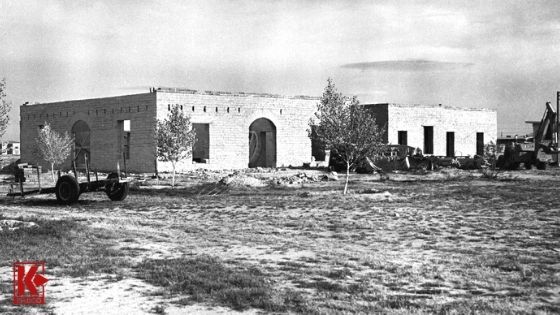
U.S. Army Post Fort Lowell
Over the past weekend, we decided to check out the old U.S. Army post Fort Lowell, which is now a huge park just a few miles from where we live. I first called the Fort Lowell Museum to make sure that we could metal detect there. All of the historical areas are secured and inaccessible, but I was given permission to hunt in the park areas.
The old post was active from 1873 to 1891, following the Civil War, and typically housed about 250 Calvary Regiment soldiers at a time. It played a huge role in the Apache Wars and was a stronghold for Tucson at the time. You can still see ruins of some of the old adobe structures, including what was once the post hospital. I found it interesting to not only read about (and hear about – my husband is a history nerd who loves this sort of thing), but also to actually see the history in the ruins of the fort.
While we didn’t find much in the way of treasure on our outing, I learned some things about metal detecting that I know will help us out as we continue our hunting.
- Using different settings can tell you a lot. On this outing, we played with the settings on our detector to get an idea of what the alerts sound like, what the detector could tell us about how deeply something is buried, and what types of metals we might expect to find when we started digging. We’re getting the hang of it.
- You need to have a plan when searching large areas. Fort Lowell park is huge, and we didn’t have a plan when we got there. We searched around some of the structures’ enclosures, but mostly searched willy-nilly. Afterward, I could see that next time we go, we need to have a strategy for searching; especially when there is a large area to hunt. Breaking the area down into smaller sections and then thoroughly searching each part will be more helpful and productive, I think.
- A pinpointer is a valuable tool. The pinpointer makes finding targets so much easier! Once we narrowed down an area to dig with our detector, using the pinpointer to hone in on the metal made the searches go much faster because its alerts intensify as you get close.
- It’s more exciting to hunt when you know the history. We did find some old, very rusted nails and unidentifiable pieces of metal on our search. That may not sound super exciting, but when we added in the history of the area, it made it more thrilling. The pieces we found certainly looked old enough to have been part of the construction of the fort, and we found them around the ruins. Were they Civil War era metals? I don’t know, but knowing that they could be is pretty cool.
- The Arizona ground is really hard! We may have to invest in some additional digging tools. Southern Arizona is dry and hot (it was over 90 degrees when we went hunting, and it’s mid-October!), so the ground is like clay that has been fired in a kiln.
Overall, the search was great. We had fun, found a few things, talked about history, and enjoyed being outdoors. We’ve got some plans for upcoming hunts and will likely return to Fort Lowell too, next time with a plan and more experience under our belts.
Metal Detecting on Hiking Trails
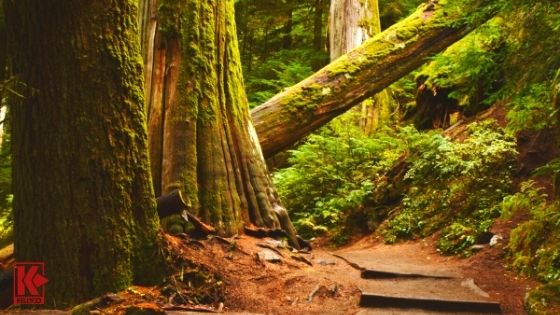
Hiking Trails
If there is one thing there is not a shortage of in Tucson, it’s hiking trails. The city is surrounded by mountain ranges on all sides, and there are trails throughout all of them, from the foothills to the highest peaks. Of course, the weather here makes it a great place to hike nearly year-round. It also makes it the perfect place for metal detecting.
We decided that we would give some of the trails a search with the metal detector, as they fit all the criteria for successful hunting. They are places that see a lot of traffic from people and typically, anyplace that people congregate is fertile ground for detecting. Also, we are in the middle of monsoon season here, which means that the heavy rainfall in the mountains causes dirt, debris, and hopefully valuable lost targets to flow down into the popular hiking areas at lower elevations.
My husband works for the Forest Service at one of the most visited hiking areas in Tucson, Sabino Canyon. The park has tons of hiking trails for all levels of experience, so the traffic there is constant, even in the hot summer months. And, it’s a place where getting permission to hunt is easy, since my husband knows the right people to ask. However, while we’re allowed to hunt and even dig, but we’re not allowed to remove anything we find. It’s like catch and release fishing, we’re doing it for sport instead of any other reason. Note: Remember to check in with your local park and always ask for permission.
I did some reading on where along hiking trails might be the best places to hunt. The advice that I found listed the following as prime spots to search:
- The edges of the trail, especially when the trail is lined with rocks
- Anywhere that people stop to rest along the trail – large rocks that are good for sitting, under trees where they might rest in the shade, and rock overhangs where they stop to get out of the sun and rest
- Scenic overlooks where people stop to take photos or enjoy the view
- Along creeks or anywhere that water pools (luckily, it’s monsoon season so there was actually water when we hunted)
Another piece of advice that I found was that it might be worthwhile to turn up the sensitivity setting if we weren’t having any luck.
While our trip to the canyon turned out to be a lot of fun, and we saw some beautiful landscapes, we didn’t have much luck finding anything – a few coins and metal debris. But, we weren’t disappointed. We got in some hiking, got to swing our detector, and had a great time.
Our next hunting trip will be searching some washes where flash flooding during the monsoons happens. It seems like that has some great potential. When flash flooding happens, there is a lot of ground movement, and things that have long been buried may be moved toward the surface. Of course, we’ll wait until the rainy season is over so we stay safe.
Where Should I Start Metal Detecting?
If you have recently gotten your first metal detector, you are probably filled with excitement to get out and start swinging. Hopefully, you have practiced in your own backyard, so you have an understanding of how the machine works and how to identify the alerts and settings.
Now, the question is where to continue your practice and find some real targets. The following are some great places to start.
Local Parks
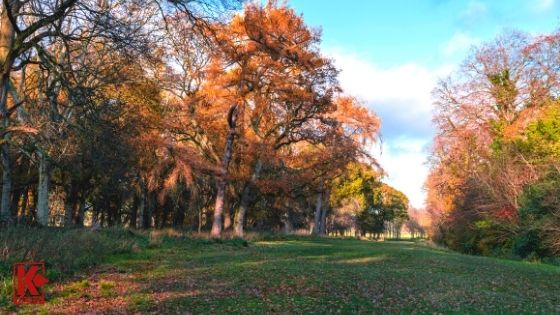
Local Parks
The parks that are in your own neighborhood are often good places to practice your detecting skills, and you will likely find some targets. This is the time to get used to moving your detector in slow, even swings and concentrate on learning the signals you get for various pieces of metal. In parks, you will probably find some trash – soda can pop tabs, bottle caps, etc. – but it’s good to learn how to discern those signals for your future hunting. Parks are also great places to find dropped coins and jewelry.
Around Sidewalks
Hunting sites that see a lot of activity from people are key to finding targets, and sidewalks are a good place to start. Find sidewalks that have a lot of daily foot traffic to begin your search. There’s a pretty good chance that someone has dropped something as they walk along the sidewalk; just think about how many times you have seen coins or other objects on the ground as you go for a walk. Now, with your detector, you can find those items as well as the ones that have been covered up, buried, or lost in grass around the sidewalk.
Old or Historic Gathering Places
For these sites, you will have to do a little bit of research. You can use your local library or search online for historical maps of old homesteads, railroad camps, farms, and the like. These are prime spots to hunt, especially those where no structures still exist so other detectorists haven’t likely already hunted them.
Beaches
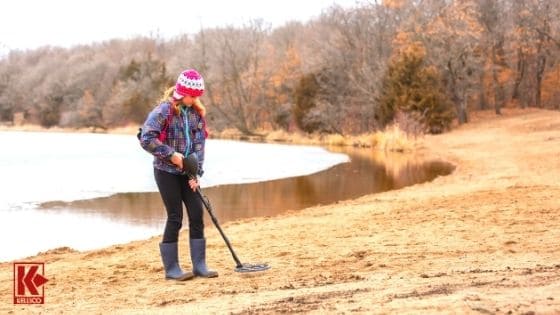
Beach Hunting
If you live in an area with beaches, you can spend a lot of time hunting there. They are one of the best places to practice detecting because people often lose or drop coins and jewelry as they are getting ready to hit the water. Some metal detectors are made to hunt underwater as well, so if yours is, you can also hunt in the shallow waters, increasing your potential for finding targets.
Abandoned Buildings
Abandoned houses, churches, and other structures are often home to various leftover finds. Be sure that you hunt the grounds around the old structures, under and big trees where people may have sought shade in the past, and even inside the structure where you may find hidden treasure under floorboards or in the walls. You may have to do some research to find these types of sites, but it will time well spent.
Get Started
The above areas are only a few of the great places you can metal detect. As you become more experienced, you will come up with many others. Keep in mind, that you always need to secure permission before hunting sites as some places prohibit metal detecting.
25 Best Metal Detecting Sites
While there are literally hundreds of places to use your metal detector to find coins, rings, jewelry, gold, relics, and even real buried and hidden treasures, you must keep one important piece of information in mind –

Go Where People Have Been
You must go where people have been, where they lived, where they worked and played. From as far back as you can find to even today – What are people doing? Where do they work and play? What places do they visit?
People lose coins, rings, jewelry, and other treasures everywhere they go.All kinds of valuables are lost or hidden for safekeeping. Many valuable treasures are buried and, for unknown reasons, the owners never come back to retrieve them. All these millions of coins and tens of thousands of dollars in rings and jewelry have never been found!
All the sites listed below are ones that have been submitted by our valued customers and members of the Kellyco Test Team who are devoted treasure hunters. Happy hunting and good luck on your metal detecting adventures!
Where To Go Metal Detecting
- Parks
- Schoolyards
- Playgrounds
- Fairgrounds
- Picnic Areas
- Recreational Vehicle Parks
- Amusement Parks
- Carnival Sites
- Swimming Areas such as Lakes and Rivers
- Seaside Beaches
- Sand, Dirt or Grassy Parking Areas
- Old Home Sites
- Old School Sites
- Children’s Summer Camps
- Fishing Camps
- Hunting Camps
- Under Grandstands and Bleachers
- Under Ski Lifts
- Churchyards
- Old Military Bases
- Old Campgrounds
- Roadside Produce Stands
- Around any Resort Area
- Stock Car Speedway
- Small Circus Grounds
New Suggestions:
August 13, 2008
Abandoned Areas:
Where I live there are two trailer parks that have been here for 50 to 75 years. Developers bought the property and the trailers will all be gone or abandoned soon. Looking forward to searching them.
I also drive out of the city to the country and look for the remains of old houses, barns or whatever looks empty and run down. Great places to detect.
May 2009
Winter Sledding Spots:
One place I always go back to is where folks go sledding in the winter. Some of these areas have been used for generations. The most targets are at the top and the bottom of the hill.
May 2009
Ice Cream Truck Route:
Everybody has an ice cream man/woman who drives their noisy truck thru the area, watch to see where his regular stops are and search there!! KIDS+POCKETS FULL OF CHANGE+ TOTAL DISTRACTION TO GET ICE CREAM= LOTS OF COINS ON THE GROUND!! Happy Hunting!!
June 2009
Old Railroad Rail Lines:
The country is crisscrossed with old and abandoned railroad railroad line. Many abandoned rail beds have been converted to “Rails-to-Trail” hiking, horseback riding, and bicycling trails and are easy to find. Others are overgrown but can be spotted by their constant-grade profile. Old maps in your state library will show the location of many old railroad lines. Once located, and permission to prospect is granted, begin your search in the areas around the old station buildings. These are the most productive area as coins were handled there. But under no circumstance should you approach active railroad lines because of the obvious danger from trains and the sensitivity of railroad police to intruders — this is especially true since 9/11. Please use good judgement when metal detecting for everyone’s sake.
June 2009
Rivers and Waterways:
Many towns, villages and cities throughout North America boast significant historical value. Do not overlook the shoreline along rivers and waterways adjacent to those communities. Since water routes were the major means of travel over past centuries, there is much to find along the banks. I have found everything from old money to firearms, native trinkets, metal money boxes (sometimes with contents intact), fobs, watches and even nagivational instruments. Don’t forget to search out into the water a ways. This is where it is important to own a waterproof detector. The past is waiting to be discovered right in your own community.
November 2009
City Drains:
Most cities have storm drains that eventually dump into rivers or streams. Where the concrete ends and the dirt or gravel begins has been a productive site for me. – Ned O.
October 2011
Grassy Areas:
Another suggestion would also be old telephone booths, especially ones that are located with some grassy areas around them. Municipal swimming pools that also have grass
around them. About anywhere that there are grassy areas is a good place to look. People lose money, and jewelry in the grass and cannot find it – Randy R.
Bus Stops / Roadside:
Roadside yardsales…gonna go hit one today. Every Sunday they set up along a main road and the crowds roll in. Bus stops. Places where summer outside movies are shown on the side of buildings. – Gray C.
November 2011
Airport Public Viewing Areas:
I have a suggestion for a location. Airport public viewing areas. I have found all kinds of coins at these locations. People sit on the grass and kids are playing as they wait for the planes to land or take off – losing all kinds of change and rings. – Dean M
Unusual Spots to Find Treasure – Where to Hunt
If you have been metal detecting for any length of time, you probably know the typical places where you’re likely to make finds. Beaches, schools, parks, playgrounds, and ball fields follow the detectorists rule of thumb – hunt anywhere that people have congregated. In those places you may find things like lost jewelry, coins, and other commonly dropped items. However, there is a lot of other treasure to be found in some unusual areas that you may not have thought of searching. With a little bit of research and luck, you may find that your detecting finds exceed the norm.
Do Some Digging Before You Dig
You may have some treasure awaiting you right at your backdoor. Researching your hometown’s history can provide you with ideal hunting spots.
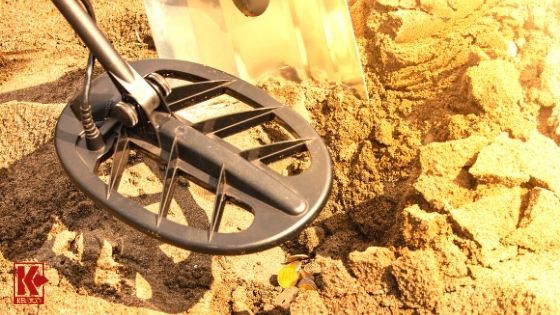
Treasure Awaits
It’s fairly easy to do this kind of research. Most public libraries have historical information about the city or town on file, but a trip to the library is only necessary if you have difficulty finding the information online – the internet is a valuable tool for detectorists. This research needn’t be boring, like preparing to write a paper for school. It’s helping you to narrow down the best sites for searching, otherwise you’re swinging your detector aimlessly.
If you can find old maps and homestead markers, they may provide you with some interesting sites to hunt. Some of the things to pay attention to for potential searching grounds during your research are:
- Abandoned homes
- Civil War battlefields
- Unsolved robberies
- Discovery of gold, silver, or copper
- Sites where fire, flood, or natural disasters struck
- Local landmarks
- Wagon train and emigrant routes
- Abandoned churches and meeting places
- Old city dump
- Former or abandoned boarding houses, saloons, and hotels
- Old outhouses
There are many places in modern cities that used to serve as other things. A little bit of research will tell you and you might just find a piece of your city’s history.
Opportunists Make Good Detectorists
Sometimes opportunity presents itself when you least expect it. Pay attention when you hear about your town’s history or lore. You may know, or hear about, your town’s oldest areas that are now highly populated, seemingly undetectable. But there may still be opportunity there. Consider areas that haven’t been developed, or if they have, it was long ago. Places like the strip of grass or dirt between sidewalks and the street are good places to look. They likely haven’t been searched.
Also pay attention to new urban developments that are being started. When construction begins, the ground that is normally five or six feet down, is upturned and close to the surface. These are precious hunting spots! Detectorists have found interesting and valuable items at construction sites. Even when it’s just a sidewalk or road being replaced, you may find treasure that has been covered up for a long time. (Remember to get permission to search these types of areas first)
The key to finding unusual spots that probably haven’t been previously searched is to start paying attention to your town’s history. Whether you research it yourself or you hear or see opportunities, the treasure is out there – you just have to find it.
Top Places to Start Metal Detecting!
Parks, school yards, and beaches are all “go-to” areas for metal detecting.
We have compiled a list of a few places you might not have thought of. Happy Hunting!
#5 – Farmer’s Fields
After harvest, many farmers will give permission for their fields to be searched; you might be surprised what you find.
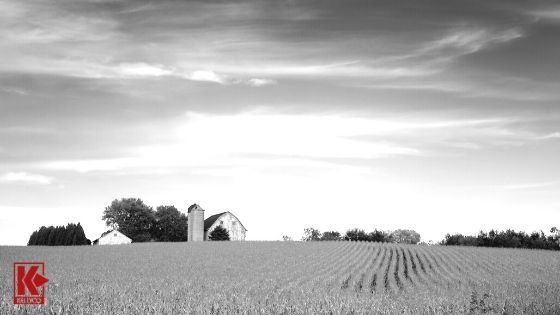
Farmer’s Fields
Farms can be a great place to find coins, relics, and other forgotten items that have been lost or buried over the years. If you are on the East Coast, you may be able to find some fascinating Civil War items as many of the battles were fought in fields. At an older farm, you could find old tractor parts or buried caches. Make sure you check the corners of the fields too. Fields aren’t the only place to look; farms often have interesting lanes that could prove fruitful. Try searching on either side of the small roads or paths where things might have been dropped. Fences and large trees could be hiding interesting treasures in holes or hollows. Old, abandoned barns or farmhouses should also be searched; coins or other small items could be waiting for you to find them. One thing to keep in mind: make sure you ask for permission before hunting on someone’s property.
#4 – Construction Sites
You never know what you could find if you go hunting at an urban construction site.
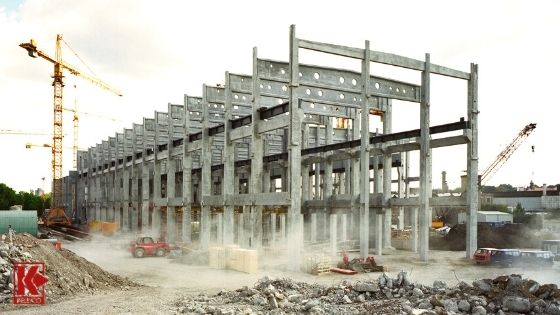
Construction Sites
Whether the site was home to previous buildings or the site is breaking new ground, you may be in for a great find! Bulldozers turn the soil, and skim off a good amount of ground, bringing valuable items closer to the surface. You may still need to dig a bit as not all items will be right on the top; but you may be able to detect something that would have been too deep before construction. A construction site might be worth more than one search as well; the top soil will be constantly changing as building progresses. Just like with searching farmer’s fields, we recommend asking permission to hunt construction sites.
#3 – Recheck the Hole
Sometimes the best place to look is where someone else has already looked.
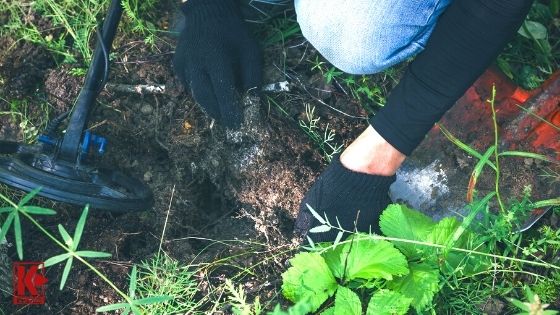
Recheck The Hole
If you find yourself treasure hunting where someone else has already dug up some finds, you may find some great items close or in their old search area or dig site. Old tools and coins left around corners could be indications of previous metal detecting activity; try to find a hard to detect spot most people would not search. Try searching in a grin pattern to find hot spot that have been left unsearched. You may be able to uncover a valuable find just deeper than was searched before.
#2 – The Sidewalk Strip
Sidewalks can be a great area to find untold treasures.
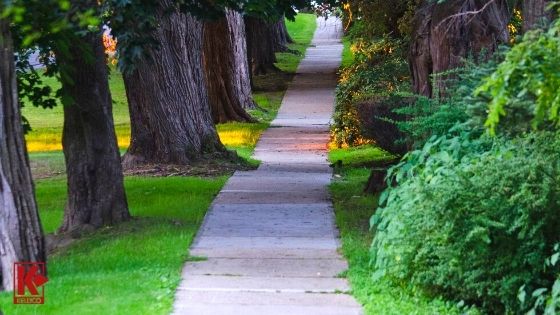
Sidewalk Strip
The area between the sidewalk and the road is often over looked, leaving coins and jewelry just waiting to be found for years. Since the grassy strips are public property but maintained by the homeowner, you will want to ask permission of the homeowner before searching these areas. If the machine makes a beeping sound over a sidewalk, it could be because the sidewalk is new. Try turning the coil on its edge and sweep; this should increase the chances of finding items.
#1 – Your Own Backyard
Whether you live in an older home or one that was just built, you may have hidden treasures in your own backyard!
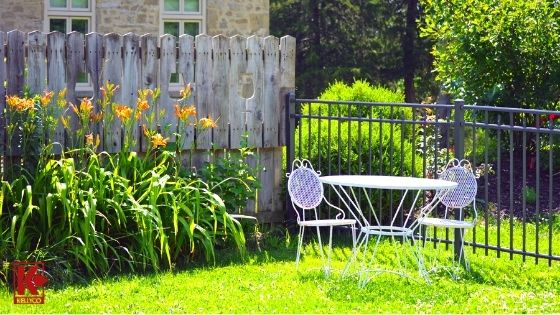
Your Own Backyard
New to metal detecting? Searching in your own property will help you learn about your new metal detector and get used to the different sounds made when your detector finds different kinds of metals. Even if you are just getting used to a new detector, or simply want to learn what could be hidden on your own property, you may be surprised what you can find.
Tips for Metal Detecting on a Construction Site
Construction sites can be awesome places to find treasure. As the ground is torn up, old relics, coins, other items that have long been buried can be brought up to the surface, making it easy for you to find. And these days, most cities always have areas that are under construction for one reason or another.
Your first task in detecting construction sites is to get to know the workers or builders.

Get To Know The Workers Or Builders
They will be able to point you in the right direction to the property’s owners or governing officials so you can get permission to hunt onsite. They may even be able to provide you with some history about the site and let you know when they will be breaking ground.
Once you’ve gotten permission, and you’re ready to start hunting, consider the following tips to help you with your search:
Search New Building Sites
If you see that old buildings or homes are being torn down to be replaced with new buildings, those are prime hunting spots. When the bulldozers start working to clear the property, it’s a great time to hunt the areas where old property lines were located. Sometimes old hedges that separated homes are torn out, and because hunting underneath them was difficult to impossible while they were planted, you may find valuable items when they’re gone.
Focus on Hot Spots
Try to pay attention to the graded areas of the construction site. Some of the areas will be graded to the perfect depth to uncover targets or at least bring them much closer to the ground’s surface. When you find something good, slow down and pay attention, you may find other items in that area. Keep in mind that some areas may be graded too deeply, which will bury any relics even deeper – don’t’ waste your time on those areas.
Watch for Dirt Piles
If you’re too late and the dirt has been graded to deeply, you may still be able to locate treasure in the piles of dirt that have been set aside. Depending on just how much dirt there is, it may have to be moved offsite. If that’s the case, you might be able to search over and over as they take loads away one by one exposing new layers with each trip.
Know When Dumpsters Will Be Moved
There are typically some large dumpsters that are used on construction sites. Debris and construction trash is loaded into them until they fill up and then they are taken and emptied at the landfill. Most of the trash is loaded by heavy equipment and may not be exactly accurate as it’s dumped. That means that there may be items for you to find around where the dumpster sat.
Use the Right Coils
If the construction site you are searching is small, you want to use a small coil that will get in between trash and the items you want. On big construction sites, there is a lot of ground to cove so while you still want to avoid trash, you also want to be able to cover the whole area. That means that larger coils might be your best option in the open areas, while smaller ones will be good for around the footprints of where the torn-down buildings stood. Shop more search coils here.
12 Ways To Find Older Areas To Hunt
While there are many different places hunt with your Metal Detector, the thrill of recovering older more valuable coins plus holding in your hands different relics of the past will be something you will want to experience. Finding coins from the 17th, 18th and early 19th Century is a far greater thrill than you can imagine.
The answer to finding older sites is “Research!” Where can you find research material?
1. Old Maps – can be found in local libraries, local history books, they show old roads, abandoned railroad stations, many times school buildings and other points of interest that either no longer exist, or people have forgotten about.
2. Old Newspapers contain a wealth of information on almost every page stories about holiday celebration on the town square park (may no longer exist) Carnival arriving in town (where did they set up?) and much more information.
3. Old Property Tax Records show where older houses, farms, service stations, interstate bus stops, taverns etc. once stood. Lots of old coins to be found.
4. School Records not only tell you where schools once stood. Find all the roads and paths that students took to get to school. Find out exactly where the building or buildings stood. School playground areas, where outside lunch benches were… etc.
5. Local Historical Societies are a great resource containing valuable information on dozens of older happenings of your town from it’s very beginnings up till today… A valuable resource not to be overlooked.
6. Old Data Sets – data which has been scraped from historical sources using tools like Archive.org or Archivarix offer a digital library of internet sites and other cultural artifacts in digital form and thus can offer clues which aren’t currently available online.
7. Local Museums usually have displays of historical interest as well as many books on the areas history. Spend time with anyone that works in the museum, they generally are part “Historian.” Listen to what they can tell you.
8. Senior Citizensare a walking history of your town or city. Take the time to visit the senior citizen homes and events. Make friends with those folks and listen to the stories they can tell.
9. Old Police Reports can pinpoint events that can turn into a “Treasure” spot. Robberies of lake front homes many times ended with the thief throwing his loot into the lake if he was about to be captured. Police calls to businesses or homes that are empty lots right now.. etc.
10. Old Fire Department Records can indicate where many building & properties once existed. Probably the best source for what once stood on now empty lots. Fire Departments also participated in many town activities such as picnics and parades. Where did the parades begin and end? Where were the picnics held?
11. Churches – church records will show where the earliest churches were established. Some no longer exist & were torn down or purchased for another business now on that spot. People spent time before and after church to picnic and join in many outdoor activities.
12. College(s) – start small and add more buildings from time to time. Lots of areas outside buildings, sports areas, student eating areas, picnic spots, etc. Colleges are also a depository of information about the towns and cities where they are located. Check the college library.
13. Library – we saved the best for last. No place has more information than the local library. Check with the Librarian who can direct you to a wealth of information about your town. (Or any town if you want to search out sites in neighboring areas) Libraries are the main “Depository” of information of all kinds,, many times having a number of items discussed above, “old maps, old books, old records, etc”. Get a library card, it will really pay off!
